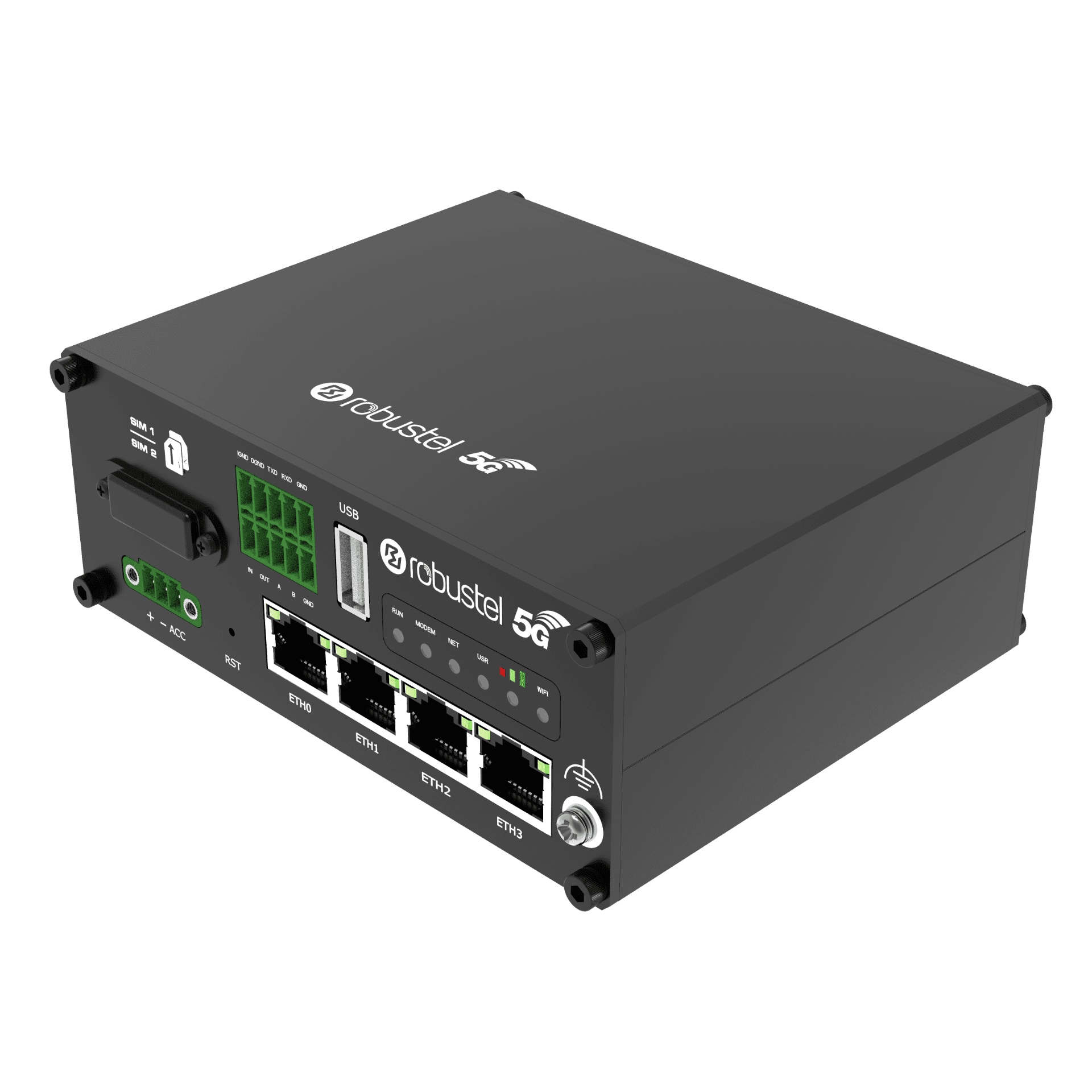Always-On 5G Connectivity for Emergency Services & Public Safety Vehicles
A Robustel Application Example
Application Example – Fast Facts
Industry
Transportation, Smart Cities, Emergency Services, Ambulance, Fire Department, Police
Product(s)
R5020 5G Router, RCMS
Challenges
Vehicles move through overlapping and inconsistent coverage zones while running mission-critical apps such as computer-aided dispatch (CAD), mobile data terminal (MDT) workflows, mapping, video streaming, electronic patient care reports (ePCR), and automatic vehicle location (AVL). The backhaul must stay online during handovers, under load, and across carriers—securely and with predictable operating cost.
Expected Outcomes
A resilient, encrypted 5G connection with seamless failover via Dual-SIM for carrier diversity (and optional tertiary backhaul), clean separation of in-vehicle networks, and centralized fleet operations. Crews stay connected, response workflows remain uninterrupted, and IT can prove control.
Connected first response at high speed
When an ambulance is rolling to a cardiac call or a fire crew is clearing a scene, connectivity can’t be “best effort.” Critical apps: CAD, MDT, AVL, ePCR, and live video need a stable path back to headquarters. Yet the route crosses different carrier footprints, cells are congested near stadiums, and handovers happen at highway speed.
A purpose-built 5G vehicle router, managed as part of a fleet, changes the equation. Dual-SIM provides carrier diversity, optional satellite or TETRA (Terrestrial Trunked Radio) bridges true not-spots, and encrypted tunnels keep data protected end-to-end. The result: crews focus on the job, not the link.
Business Challenges
What makes emergency fleets hard to keep online? These vehicles are mobile command posts with demanding apps and strict uptime expectations. The network must tolerate motion, congestion, and changing RF conditions while satisfying security policy and audit needs.
- Coverage variability: Moving between cells, carriers, and terrain causes fluctuating signal and throughput; events can saturate urban sectors.
- Seamless handover under motion: CAD, ePCR, and video streams must ride through handoffs without dropping sessions.
- Security and segmentation: Operational devices, crew Wi-Fi, and peripherals need isolation and encrypted backhaul; external access must be least-privilege and time-bounded.
- Ruggedized power & install constraints: Vehicle power can be noisy; equipment must tolerate vibration, temperature, and space limits.
- Cost visibility and control: High-usage vehicles can spike data; operations needs dashboards, alerts, and policies to avoid bill shock.
Solution Overview

How the solution was delivered with a focus on resilience, policy control, and simple fleet operations.
- 5G backhaul with Dual-SIM failover: R5020 uses one carrier as primary and a second as standby. If throughput, registration, or link health drops, the router fails over per policy—no crew intervention.
- Optional tertiary backhaul: Where mandated, integrate satellite or bridge to a TETRA terminal for continuity in deep rural or disaster scenarios.
- Encrypted access to HQ: Establish Internet Protocol Security (IPsec) or OpenVPN tunnels, or use RobustVPN for consistent private addressing and audited, least-privilege access to in-vehicle systems.
- Clean in-vehicle networks: Provide secured Ethernet and Wi-Fi for MDTs, tablets, cameras, and peripherals, with virtual LANs (VLANs) and service set identifiers (SSIDs) to separate crew access from operational devices.
- Centralized fleet management: RCMS onboards units, monitors uptime/signal/data, pushes firmware and configuration in rings, and raises alerts so issues are fixed before they become outages.
Expected Customer Outcomes
What success looks like for the key stakeholders (Public Safety IT Director, Fleet Communications Manager) and the secondary stakeholders (Installers/Integrators, First-line Supervisors).
The aim for everyone is predictable uptime, provable security, and smoother field operations.
- Public Safety IT Director: Encrypted, policy-driven connectivity that survives handovers; clear audit trails and centralized control across the fleet.
- Fleet Communications Manager: Fewer connectivity tickets, faster turn-up of new vehicles, and the ability to see—and act on—usage, signal, and fault trends.
- Installers/Integrators: Standardized bill of materials and templates; consistent wiring and configuration, less rework, quicker acceptance tests.
- First-line Supervisors: Crews report fewer app disconnects; uploads complete en route; less time lost to “try another carrier” workarounds.
Featured Products
Robustel R5020 5G Router

RCMS Cloud Device Management

Talk to an Expert
Design the connectivity once then scale it across the fleet. Let’s review your routes, carriers, antennas, and backhaul policies and stand up a pilot you can measure in the field.
